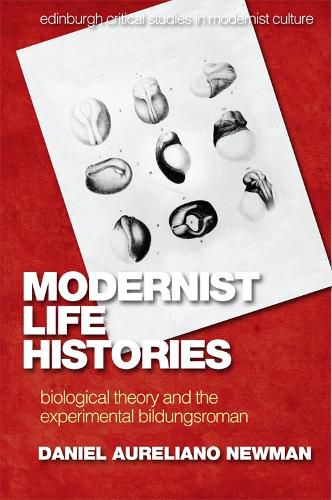Readings Newsletter
Become a Readings Member to make your shopping experience even easier.
Sign in or sign up for free!
You’re not far away from qualifying for FREE standard shipping within Australia
You’ve qualified for FREE standard shipping within Australia
The cart is loading…






Reflects contemporary paradigm shifts in embryology and evolutionary theory through formal experimentation in the modernist Bildungsroman
Modernist Life Histories explores how new models of embryonic development helped inspire new kinds of coming-of-age plots during the first half of the twentieth century. Focusing on novels by E. M. Forster, James Joyce, Virginia Woolf, Aldous Huxley and Samuel Beckett, the book links narrative experiments with shuffled chronology, repeated beginnings and sex change to new discoveries in the biological sciences. It also reveals new connections between the so-called Two Cultures by highlighting how scientific ideas and narratives enter the literary realm.
Key Features
Provides a unique perspective on the Bildungsroman (novel of formation), one of the most discussed genres in recent scholarly work on modernism Approaches the study of science and literature with exceptionally close attention to the details of scientific models, their cultural appropriations, and their political implications Makes the first thoroughgoing argument for twentieth-century biology as a positive influence on modernist poetics and ethics Models how narrative theory can serve the goals of interdisciplinary research
$9.00 standard shipping within Australia
FREE standard shipping within Australia for orders over $100.00
Express & International shipping calculated at checkout
Reflects contemporary paradigm shifts in embryology and evolutionary theory through formal experimentation in the modernist Bildungsroman
Modernist Life Histories explores how new models of embryonic development helped inspire new kinds of coming-of-age plots during the first half of the twentieth century. Focusing on novels by E. M. Forster, James Joyce, Virginia Woolf, Aldous Huxley and Samuel Beckett, the book links narrative experiments with shuffled chronology, repeated beginnings and sex change to new discoveries in the biological sciences. It also reveals new connections between the so-called Two Cultures by highlighting how scientific ideas and narratives enter the literary realm.
Key Features
Provides a unique perspective on the Bildungsroman (novel of formation), one of the most discussed genres in recent scholarly work on modernism Approaches the study of science and literature with exceptionally close attention to the details of scientific models, their cultural appropriations, and their political implications Makes the first thoroughgoing argument for twentieth-century biology as a positive influence on modernist poetics and ethics Models how narrative theory can serve the goals of interdisciplinary research